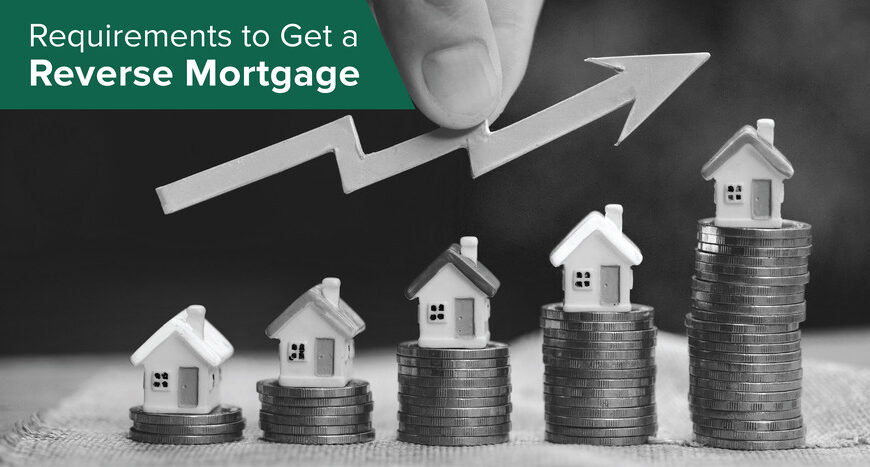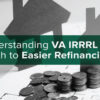Like other aspects of life, you need to plan for retirement systematically to make it comfortable, secure, and stress-free. Among other options, a reverse mortgage is a very attractive option for senior homeowners who are looking for a way to supplement their income after retirement. Though it is an excellent option, this financial product is not suitable for everyone. In this blog, we will discuss what requirements are needed to qualify for a reverse mortgage.
Understanding Reverse Mortgage
A reverse mortgage refers to a loan for homeowners, typically seniors, that enables them to borrow against the equity in their home. The loan proceeds you get from a reverse mortgage, pay off your existing mortgage first if you have one. The balance amount can be used in whatever way you want.
Though you do not have to pay off your existing mortgage, you still have to pay your property taxes, maintenance costs, and homeowner’s insurance.
Home Equity Conversion Mortgage (HECM) backed by the FHA is the most common type of reverse mortgage. In addition, there are property reverse mortgages and single-purpose reverse mortgages.
Let us now look at the rules and requirements that are laid down to qualify for a HECM.
Rules and Requirements for Reverse Mortgage
The HUD, or Department of Housing and Urban Development, has stipulated a certain eligible age group and property standards.
1. Age requirements
Since reverse mortgages have been created to help homeowners nearing retirement or seniors, the age requirement has been set at 62 or older. If you are 62, but your spouse has not reached the required age, you can still qualify for a HECM. However, your spouse will not get access to the loan proceeds as she will be considered a non-borrowing spouse. As a non-borrowing spouse, they get the right to stay in the home in the event of the borrower passing away.
2. Financial requirements
A counseling session with a third-party counselor approved by HUD is a must for all HECM borrowers. The aim behind this is to make the borrower clearly understand the mortgage requirements, how it works, and the options available. It has to be noted that the borrower should continue to maintain their property and pay their property taxes and homeowners insurance, or they may lose their home.
HUD ensures that borrowers can pay off their financial obligations by conducting a financial assessment. Based on the assessment’s reports, borrowers may need to keep aside a percentage of their proceeds to pay off their financial obligations. The amount set aside is put into a LESA or Life Expectancy Set-Aside that is similar to an Escrow account.
Rules for homeownership eligibility
Some rules have also been laid down for the property to qualify for a HECM:
- You must be the owner of the property, and it must be your primary home
- Sufficient equity in the home is a must – at least 50%
- You can own your property free and clear or have an existing mortgage
- If you have condominiums or manufactured homes, they may qualify if they are HUD-approved and comply with FHA Standards
- Four-unit properties or single-family homes can qualify if the house owner occupies at least one of the units
Key Advantages of Reverse Mortgage
Let us now look at what you gain from qualifying for a reverse mortgage:
- You are not required to pay monthly mortgage payments.
- You continue to be the owner of your property.
- You have the choice to pick how to receive your funds, whether as a one-time payment, a line of credit, steady income-tax-free monthly payments, or a combination of these three.
Different ways to receive HECM Funds
You can choose to get your funds from a HECM in these ways:
- Single Lumpsum: Lots of homeowners choose to pay off their existing mortgage or buy a new home using their reverse mortgage proceeds.
- Line of credit: A few homeowners may not have an immediate need for cash but may want to get a line of credit for peace of mind. In cases of unanticipated bills or emergency payments that may arise in the future, this can be a good option.
- Term payments: If you are a retiree who wants to supplement your monthly funding, you can choose term payments. For a fixed period chosen by you, you get equal monthly payments.
- Modified Term: This combines both a line of credit and term payments, allowing homeowners to get scheduled monthly payments while also keeping funds in reserve as a line of credit.
- Tenure: With this option, the homeowner receives equal monthly payments as long as one borrower continues to consider the property as the primary residence
- Modified tenure: It is a combination of line of credit and tenure. This lets the homeowner receive small scheduled monthly payments and a line of credit
Conclusion
A reverse mortgage is an ideal option for senior homeowners if they meet all the necessary requirements. If you have decided to opt for one, the first step to take is to identify the right lenders who offer this product and compare the terms.
It is advisable to take the guidance of an experienced mortgage specialist like Bond Street to navigate the complexities of a reverse mortgage. With years of experience behind us, we will ensure you choose the right product aligning with your long-term goals and present financial status.
Connect with Bond Street today for a smooth mortgage process and get the most favorable terms!















